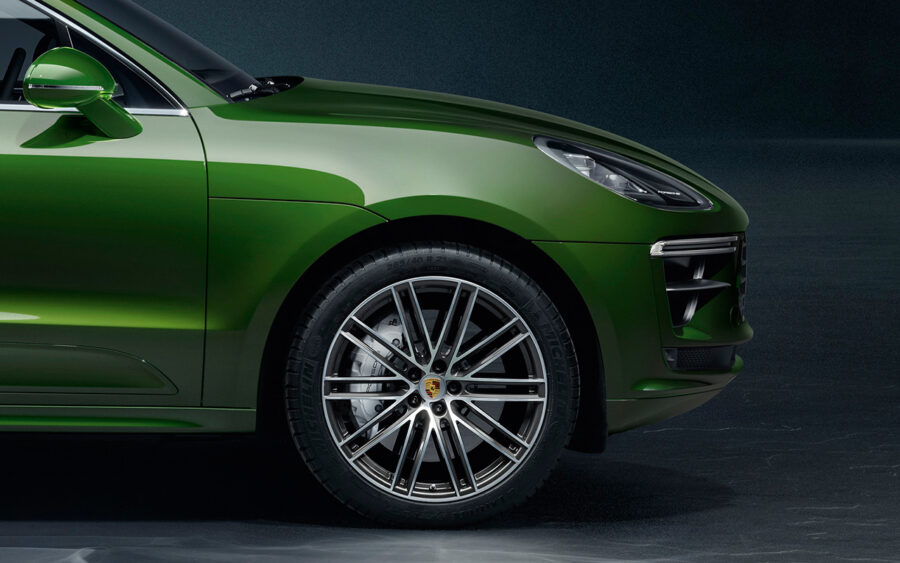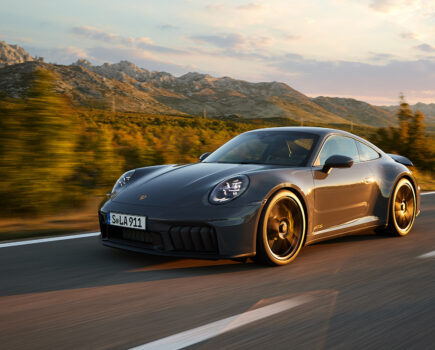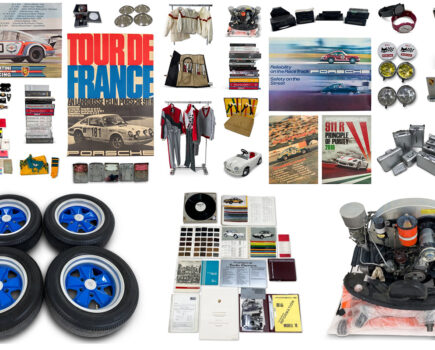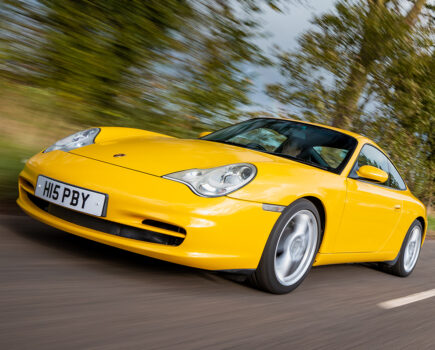The Porsche Surface Coated Brake (PSCB) system offers an alternative to ceramic brakes. But how does it work?
Words: Robert Smith
When the Porsche Surface Coated Brake (PSCB) system debuted as a standard feature of the Cayenne Turbo, it was nothing less than a worldwide first. The disc surface consists of tungsten carbide, whereby tungsten and carbon form a mixed crystal so hard it can be used to cut glass. Indeed, after diamond, tungsten carbide is one of the hardest materials in the world and around ten times tougher than gray cast iron, qualities which made tungsten carbide extremely interesting to Porsche’s dedicated braking system engineers.
What would happen if there were a brake disc which functioned nearly as well as a ceramic disc, had the same thermal stability, but cost around a third as much, didn’t need racing pads, showed much less wear than a conventional grey-iron disc, produced hardly any brake dust and didn’t rust? This sounds like alchemy, yet it’s serious technology from Porsche.
Amazing developments like this don’t just fall from the sky, though. They’re the product of intense development work. New technology developed for racing is often transferred to road vehicles. One example would be the Porsche Ceramic Composite Brake (PCCB) system, which is a master at deceleration and the absolute benchmark in its field. Modern gray-iron brakes are no slouch either, but there was a need for a hybrid of these two products, for especially powerful Porsches which don’t necessarily hit the track every day. When developing the Cayenne Turbo, Porsche decided the answer was a carbide coating. After all, why shouldn’t tool steel with a century-long track record work just as well for a brake disc?
The problem is that a brake disc made entirely of tungsten carbide would cost as much as several sets of ceramic discs. Moreover, the technology wasn’t sufficiently advanced to bind tungsten carbide to a substrate (such as gray iron), but following a lengthy series of tests in close collaboration with Bosch, Porsche made a breakthrough. A grey-iron disc was laser-processed to offer structure, then galvanized with an interlayer. The interlayer acts like a flexible bond to relieve the differential thermal extension of gray iron and tungsten carbide, which is then applied in a spectacular manner: a high-velocity oxy-fuel spraying process shoots tungsten carbide particles onto the disc at supersonic speed. For a moment, it looks like a Star Wars lightsaber is firing around the disc.

The result is a coating around one hundred micrometers thick but it still doesn’t do the trick on its own. Now what it needs is very special brake pads. Of course, laser technology and high-precision, automated production processes for a new type of disc are one thing, but a pad with the right composite is quite another.
Imagine running your finger with light pressure over a mirror. It doesn’t slide uniformly, but instead keeps sticking. Likewise, a brake disc surface as smooth as a mirror needs a special ‘adhesive’ pad — an overly soft pad on a very hard surface would wear down too quickly at high disc speeds. For PSCB pads, Porsche’s engineers added microscopic particles which penetrate the tungsten carbide coating. These pads positively cling to the disc.
“The result surprised us all,” says Matthias Leber, head of the brake system development division at Weissach and the mastermind behind PSCB. “We already knew the brakes would be good, but the first tests exceeded all our expectations.” Thanks to the smooth surface, the full pad immediately starts covering the disc at low speeds.
You could compare it to the difference between a vinyl record and a compact disc: unlike gray iron, tungsten carbide has hardly any grooves and, as we’ve already described, is smooth as a mirror, meaning there are no hollows to reduce the total amount of surface area. When greater stopping power is needed at high speeds, the hard components of the pad throw out their microscopic anchors.
“This, of course, means wear and tear,” says Leber. “It also means brake dust, but ninety percent less than what you’d get with a gray-iron brake.” Moreover, the tungsten carbide discs have a service life thirty percent longer than their gray-iron counterparts. This puts their performance level close to that of PCCB, but at only one-third of the cost. And PSCB feels like PCCB in practice — the pedal force remains consistent, even when the brakes are hot. Moreover, the brakes don’t show the dreaded fading behaviour at high temperatures. On the contrary, they work all the more crisply at temperatures above 600°C.
After around 3,700 miles of regular use, PSCB pads have polished the surface of the disc to a shine. Their colour then more or less matches a PSCB system’s white calipers. Why paint them white? “If a brake system produces practically no dust, you want to advertise the fact,” Leber laughs. “In all honesty, my colour proposal met with resistance at Porsche, but after thousands of miles of testing, the brakes on my Cayenne test vehicles were as clean as when we started.”
PSCB was introduced as standard equipment on the Cayenne Turbo, but does the system’s claim of being the perfect combination of performance, aesthetics and cost effectiveness make it the Holy Grail of road car braking systems? Leber thinks for a moment, before shaking his head. “As electrification makes ever greater advances in automotive engineering, it’ll also bring new types of brakes. Recuperation, for example, is a completely non-wear type of deceleration, which makes it all the more interesting, because at some point we’ll be able to use it for ninety percent of all standard braking action. We have to keep working on it. After all, fast cars need fast brakes, and Porsche brakes can never be fast enough.”






